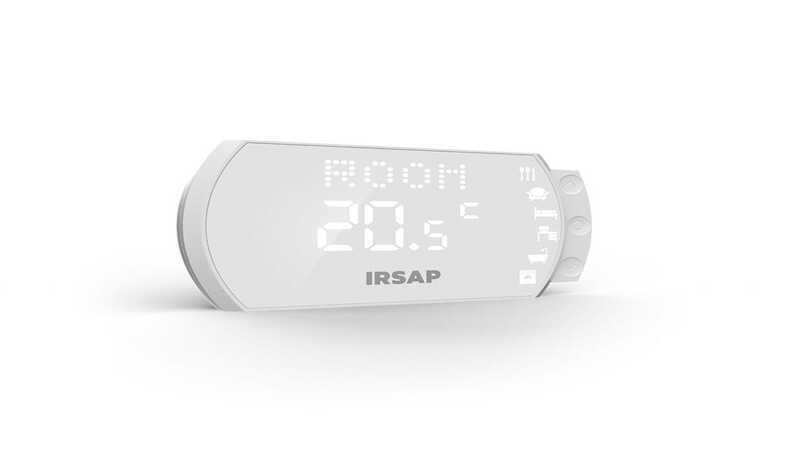Adjusting your home’s temperature with a single tap on your smartphone – from anywhere, at any time. That’s the key benefit of smart thermostats, now a core part of home automation for heating systems. Let’s explore what they offer and which models stand out in 2025 for comfort and energy savings.
What’s the Best WiFi Thermostat?
A thermostat is the device connected to your heating system that lets you set and control the indoor temperature.
- It reads the current temperature in a room and compares it with your preferred setting.
- If the temperature is too low, it signals the heating system to turn on – and switches it off once the set temperature is reached.
Thanks to continuous innovation, we now have smart thermostats: a major upgrade from traditional manual ones. Their precision plays a vital role in helping manage energy consumption.
WiFi thermostats offer all the standard features of a traditional thermostat – and more. In addition to temperature control, they allow you to programme specific time slots for heating.
This means your system can switch on before you wake up or come home, ensuring your space is always comfortable.
- When the thermostat detects a drop below the set temperature, it activates the heating.
- If the temperature rises above the set limit, it turns the system off.
One of the standout features of a smart thermostat is its ability to connect to your home WiFi and interact with voice assistants like Google Home or Amazon Alexa – just say a command, and it responds.
Many models also include humidity sensors and offer full remote control via a dedicated app.
- You can track performance in real time, receive alerts about any issues, and change settings instantly – perfect for schedule changes or early returns home.
- The entire system is geared towards maximising energy savings.
These features define a quality WiFi thermostat – and the IRSAP smart thermostat checks all the boxes.
What Makes a Good WiFi Thermostat?
A good smart thermostat should be easy to install and compatible with all boilers and heat pumps that use a relay (the electrical switch that controls the heating).
Its intelligence lies in the algorithms that learn your household habits to help reduce your energy bills.
- Over time, the thermostat picks up on your daily and weekly routines, adjusting itself to keep your home consistently comfortable – with minimal input.
- Remote control is also essential, allowing you to make changes anytime, from anywhere.
- Internet connectivity means your thermostat is always up to date, with the latest software updates downloaded automatically.
Usability matters too. A good smart thermostat has an intuitive interface for when manual control is needed. Recognising the common symbols helps, especially on the best WiFi thermostats of 2025.
- Sun: Comfort mode or daytime heating
- Moon: Night mode or minimum temperature
- Snowflake: Frost protection (prevents pipes freezing by keeping minimal heat on)
- Clock: Time programming
- WiFi symbol: Connection status
Note: on some models, such as the IRSAP NOW thermostat, these symbols may vary. For example, the snowflake might indicate that cooling is active in a specific area.
Installation guides are always included and answer any setup questions.

What Happens If the Thermostat Batteries Run Low?
Smart thermostats are battery-powered. If the batteries run out, the device won’t turn on – and neither will your heating.
Luckily, digital and smart thermostats alert you when battery levels start to drop, usually with an icon on the display. It’s best to replace them promptly to avoid unexpected breakdowns and loss of heating.

What Are the Best WiFi Thermostatic Valves?
Smart thermostats deliver efficient, personalised heating – and combining them with smart thermostatic valves takes things even further. These valves regulate the flow of hot water through radiators based on the desired room temperature.
They’re simple to use.
- The valve adjusts water flow using a control knob (also known as a thermostatic head).
- The head has a numbered scale, typically from 0 (lowest) to 5 (highest).
As with thermostats, smart versions of radiator valves have joined the market. Their technology enables real-time temperature monitoring and prevents wasted heat – reducing your energy bill with just a tap.
Top-quality WiFi thermostatic valves – like those from IRSAP – include multizone functionality, allowing you to heat only the rooms you need, when you need them.
From a smartphone, you can assign different settings to each room and focus energy where it's most needed, while reducing output in unused spaces.
IRSAP models also feature intelligent sensors that detect when a window is open. If so, heating in that specific room or zone is automatically shut off – but continues elsewhere in the house. This avoids heat loss and keeps your energy use efficient.
Additional smart tech includes:
- geofencing, which activates heating when it detects someone entering the room;
- learning algorithms, which adapt to your daily, weekly, and seasonal habits.
Smart valves are compatible with all types of water- and electric-based radiators. No complex wiring is required – they’re battery-operated and connect easily to your WiFi network by following the included setup guides.
On top of performance, design matters too. The best smart valves are visually refined, blending into your interior. IRSAP offers a range of colour options to match your decor and add a stylish touch to any radiator.










































